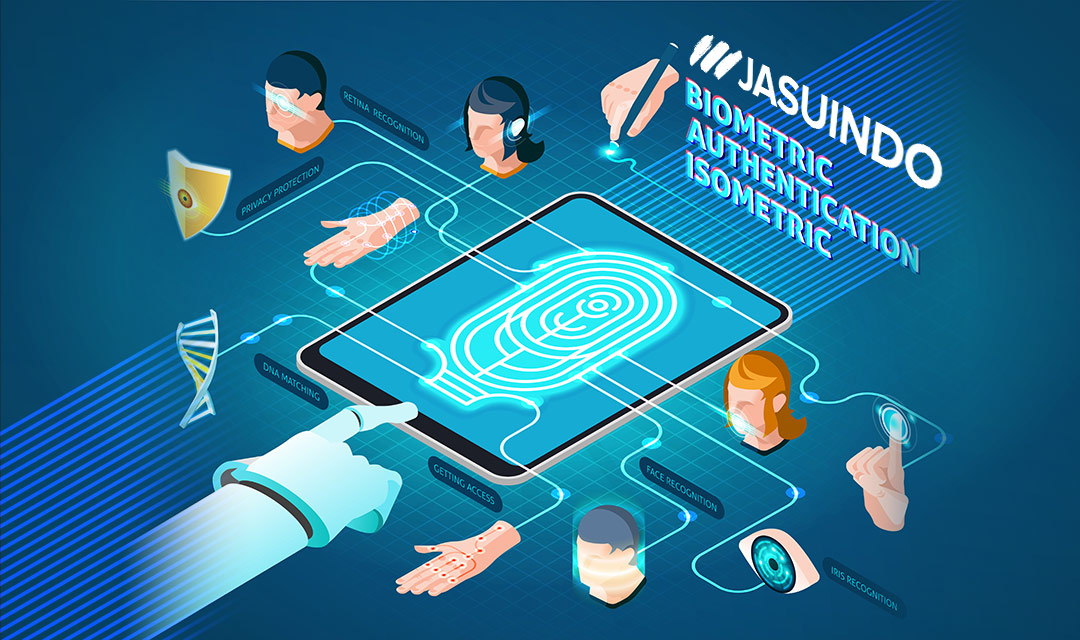
What is Biometrics?
In this digital era, data security has become a top priority for many individuals and organizations. One technology that is increasingly popular for maintaining security is biometrics. Biometrics is an identification method that uses the unique physical or behavioral characteristics of individuals to recognize and verify their identity. Check out the complete discussion about biometrics below!
Understanding Biometrics
Biometrics comes from the words “bios,” which means life, and “matric,” which means measurement. Literally, biometrics is the measurement and analysis of an individual’s biological or behavioral characteristics. These characteristics are then used to identify or verify a person’s identity. Examples of biometric characteristics include fingerprints, face, iris, voice, and more.
Biometrics offer a number of significant advantages in terms of security and authentication. One of them is a high level of security because biometrics use unique individual characteristics, such as fingerprints or faces, that are difficult to imitate or steal. Additionally, the use of biometrics also enables a fast and easy authentication process, reducing the need to remember passwords or carry access cards.
However, there are several drawbacks that need to be noted. One is that biometrics are susceptible to loss of privacy; however, there are various drawbacks that need to be noted. Because sensitive biometric characteristics must be stored in a database. There is also the potential for errors in biometric recognition, either due to technical errors in scanning or because an individual’s biometric characteristics may change over time. Therefore, it is important to carefully consider and manage these risks in the implementation of biometric technology.
Types of biometrics
The following are several types of biometric systems that are commonly used, including:
1. Fingerprint
Fingerprints are one of the most commonly used types of biometrics. Each individual has a unique fingerprint pattern, including lines, dots, and curves. Fingerprints are often used in office attendance systems or in lectures.
2. Face recognition
Face recognition or face biometrics uses the unique characteristics of a person’s face to identify or verify their identity. This technology is becoming increasingly popular with advanced digital cameras and better face recognition algorithms.
- Iris recognition
The iris is the colored part of the eye, which has a very complex pattern and is unique to each individual. The use of iris recognition involves scanning and analyzing iris patterns for identification or verification purposes.
4. Voice recognition
Voice recognition involves analyzing a person’s vocal characteristics, such as pitch pattern, rate of speech, etc. Although less common than other types of biometrics, voice recognition is often used in voice security and authentication systems.
5. DNA
DNA (deoxyribonucleic acid) is genetic material that is unique to each individual. DNA is a type of biometric that cannot be faked or changed. Each individual has a unique DNA pattern, except in the case of identical twins. With the use of biometrics, DNA can be used to identify individuals with a very high degree of accuracy.
However, the use of DNA as a biometric often requires a complex and expensive process and raises privacy concerns due to the highly sensitive nature of an individual’s genetic information. Nevertheless, the use of DNA in the field of forensics and individual identification has proven its importance in the identification and identity verification processes.
How Biometrics Work
The biometric work process involves several general steps, namely:
1. Registration
First, individuals must register their biometric characteristics into the system, such as retina, fingerprint, and others. This usually involves scanning or measuring these characteristics using special devices.
2. Extraction
After registration, biometric characteristics are extracted from the collected data. For example, in facial recognition, features such as face shape and eye position are extracted from images.
3. Creation of templates
The extracted data is then used to create a template or digital representation of the biometric characteristics. This template is then stored in the system for use in the identification or verification process.
4. Scanning
When someone tries to access the system or make a transaction, their biometric characteristics are compared against a stored template. If there is a high enough similarity, the individual’s identity will be recognized or verified.
5. Scan results
Based on the scan results, the system makes a decision whether the individual’s identity has been verified or not. This decision is then used to grant access or deny access to the requested system or service.
Examples of Biometric Applications
Biometric systems have been widely applied in our daily lives, such as:
1. Device security
Many electronic devices, such as smartphones and laptops, use biometrics to unlock, such as fingerprints or facial recognition.
2. Access control
In places such as offices or laboratories, biometrics are used to control access to certain areas, replacing physical keys.
3. Payment Card
A card where the owner can authenticate himself with a fingerprint with a fingerprint reader on the card instead of using a PIN code when making payments. This biometric payment card is one of Jasuindo’s innovations for future payment cards.
4. Identity registration
In identity registration systems, such as passports or KTPs, biometrics are often used to ensure the authenticity of individual data.
5. Health
In the healthcare industry, biometrics are used to secure medical data and provide limited access to sensitive information.
So, biometrics can be said to be a powerful technology for maintaining security and identifying individuals. By using the unique characteristics of a person’s body or behavior, biometrics provide a high level of security in a variety of applications, from device security to access control.
However, it is important to consider the privacy and data security issues associated with the use of biometrics and ensure that this technology is used ethically and responsibly.
